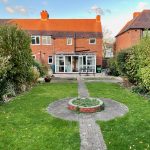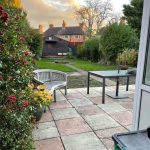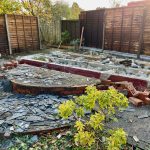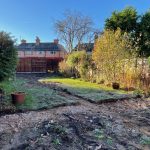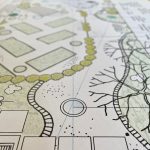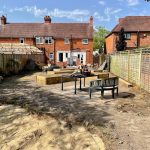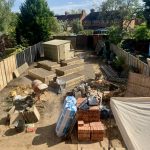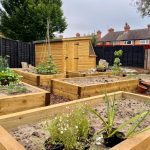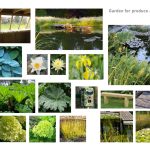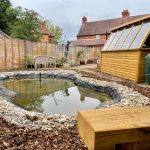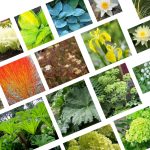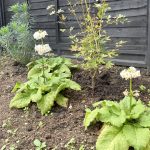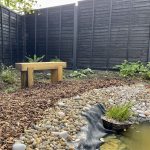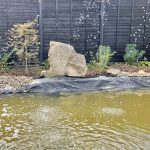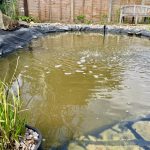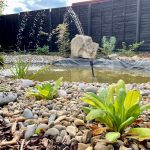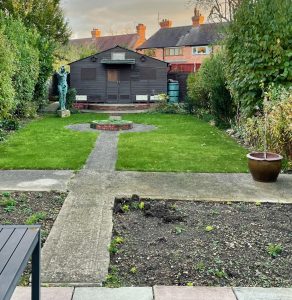 A project in 2022 to transform a long but uninteresting garden into a productive, wildlife-friendly garden with the emphasis on sustainability.
A project in 2022 to transform a long but uninteresting garden into a productive, wildlife-friendly garden with the emphasis on sustainability.
Located in what is now a conservation area and with an enormous pigeon loft at the end, the garden had changed little since the house was developed in the late 1940s. The client did not want a showpiece, the brief for this completely new garden was to produce a design masterplan and build the hard landscaping so that she could enjoy planting and gardening it over the coming years. Top of her impressive wish list were to have a large wildlife pond, fruit trees and bushes, and plenty of space for cultivating vegetables. She wanted a large shed, a good size terrace for entertaining and places to display her favourite sculptures. And importantly, to reuse materials and minimise plastic use where possible.
First to go were the concrete paths and the pink and white concrete terrace. The depth of the plot enabled it to be designed to flow through three areas: a terrace close to the house for relaxing and entertaining; the middle section for cultivation, and a substantial pond at the end. A path winds around the pond area, with seating at strategic points and planting including acers, cornus, hydrangeas, angelica, primulas, brunnera, euphorbia, fatsia and ferns.
At the end of the vegetable plot sits the potting shed. Not only do its large south facing windows enable it to function as a greenhouse, but they also overlook the pond, providing a perfect ‘hide’ for observing visiting wildlife – whatever the weather. Damson, medlar and quince trees, espaliers of pear, apple and greengage, and blackcurrant and gooseberry bushes will be planted over the coming months. In time the garden will be reminiscent of the productive, self-sufficient gardens of the 1950s, which will sit very well with the house and its new sympathetic extension.

